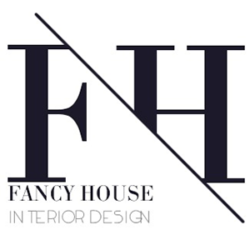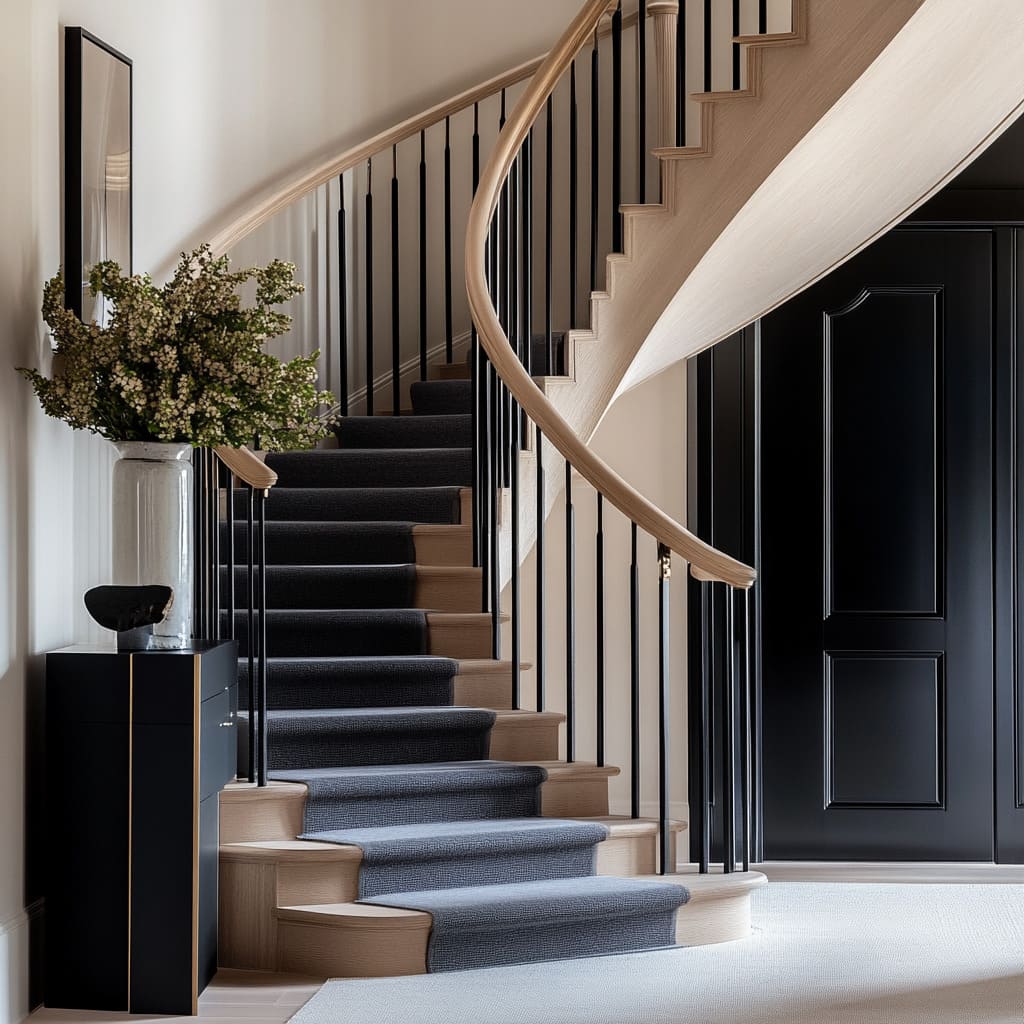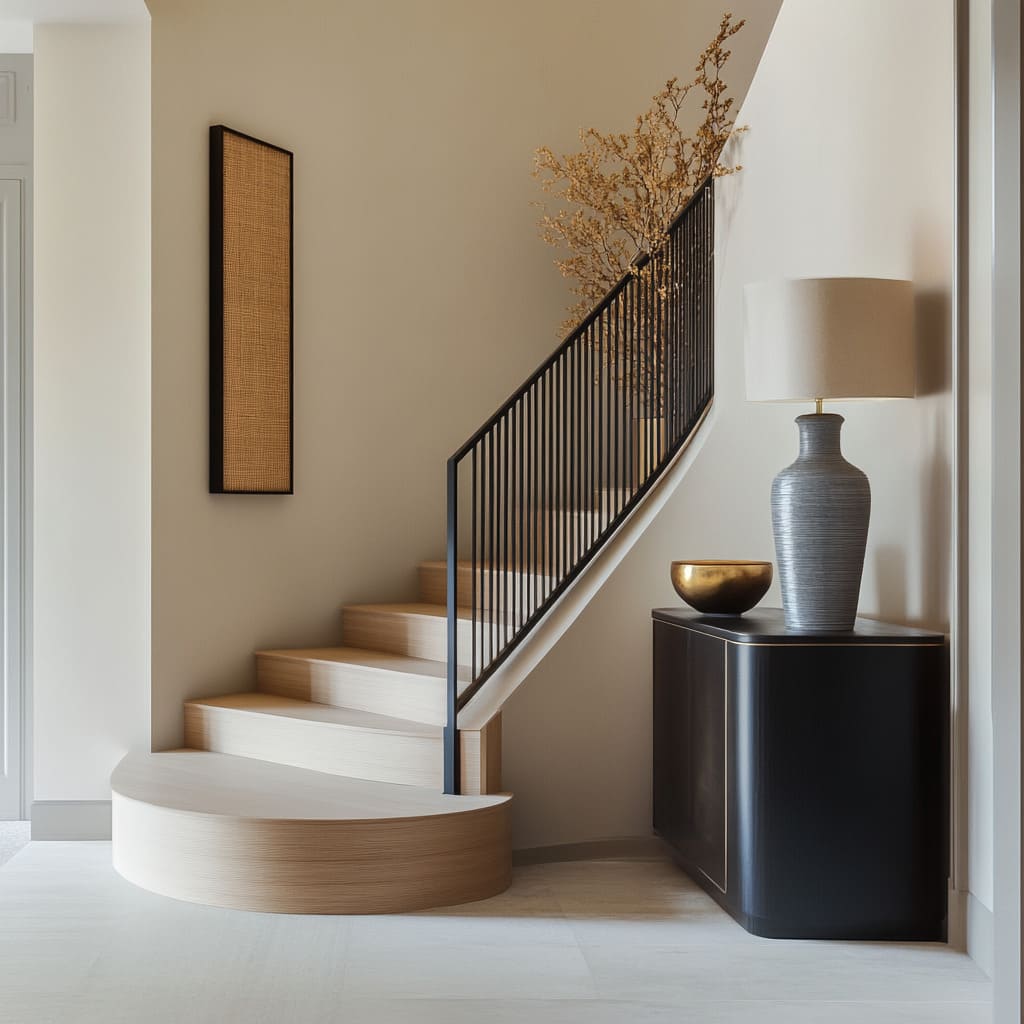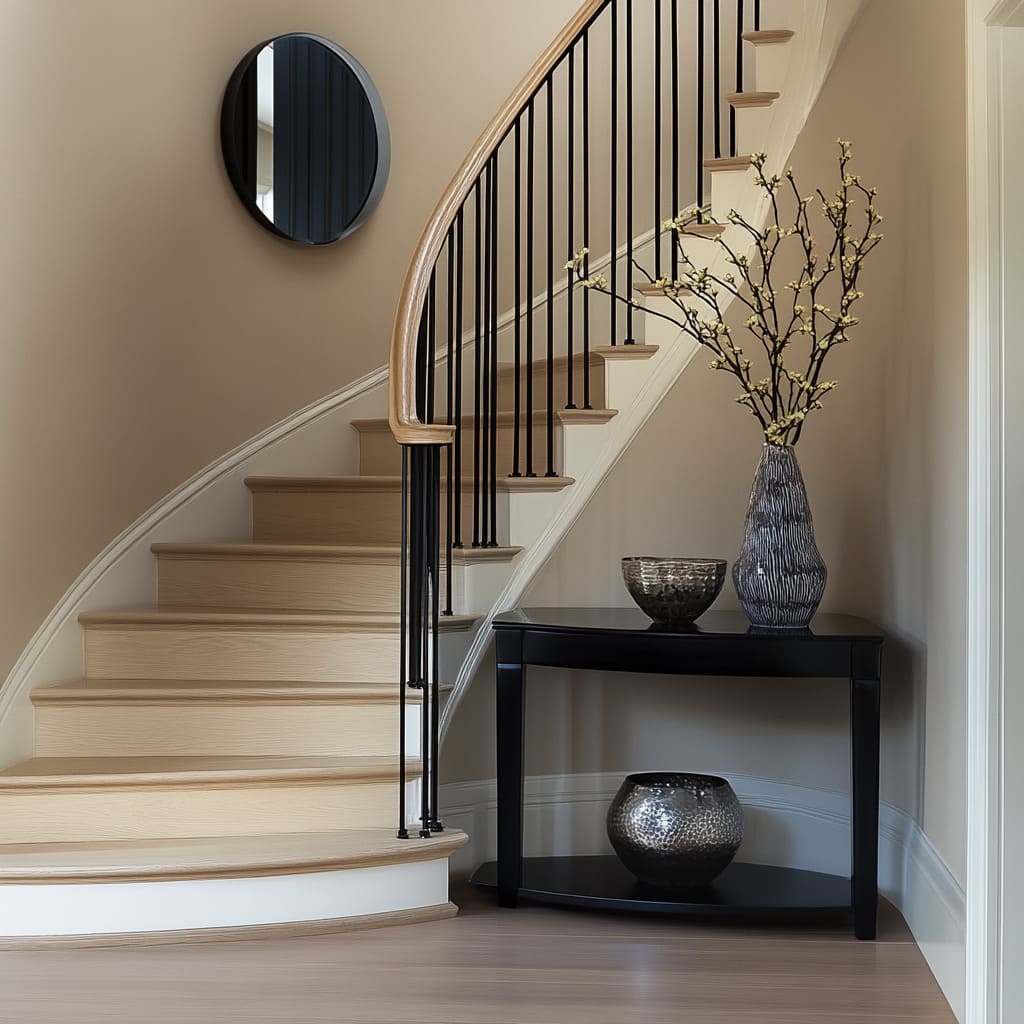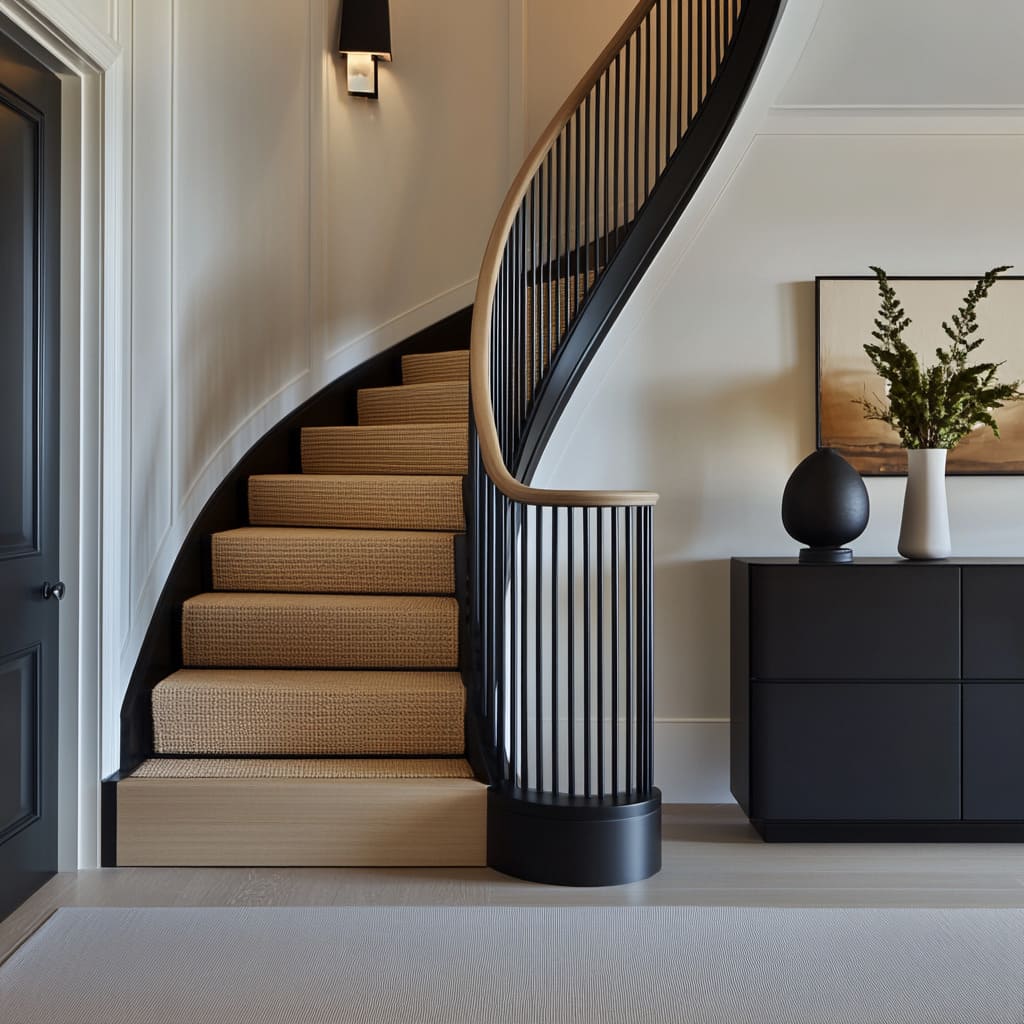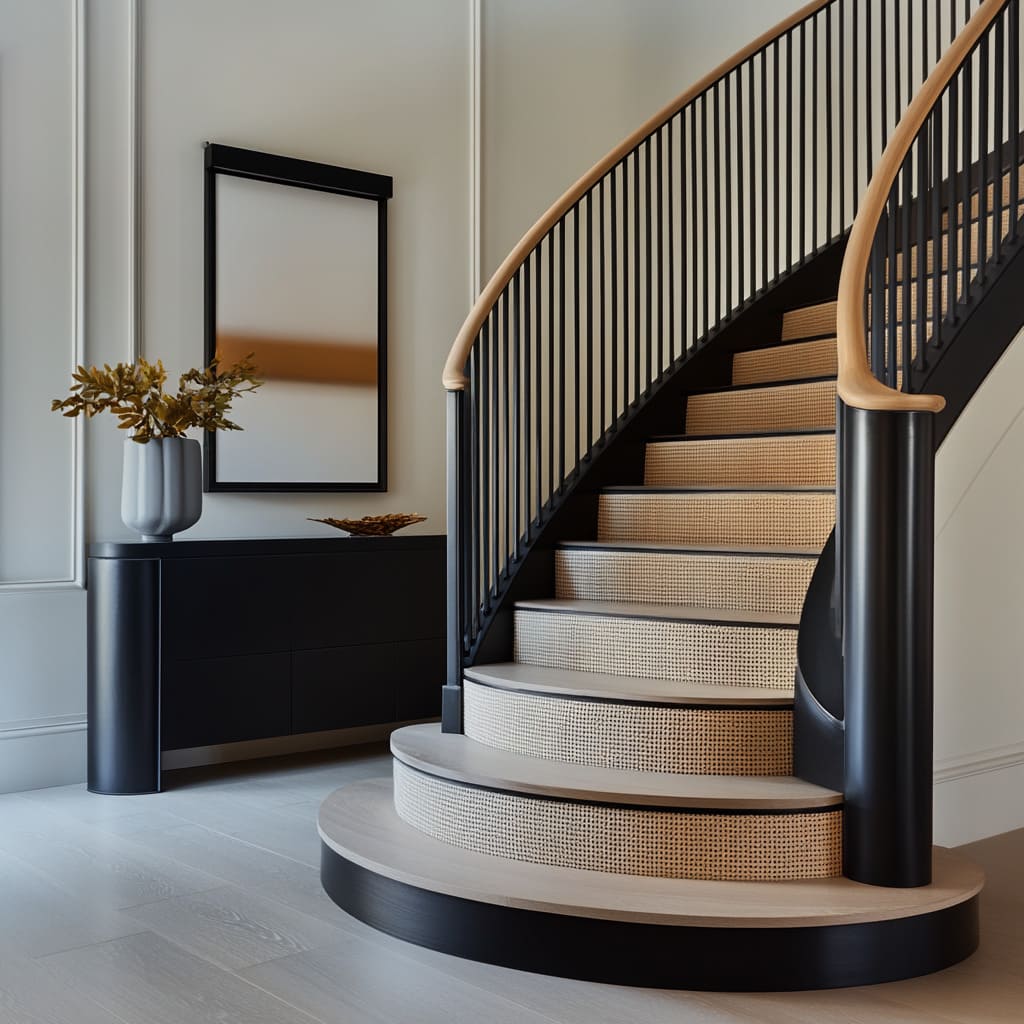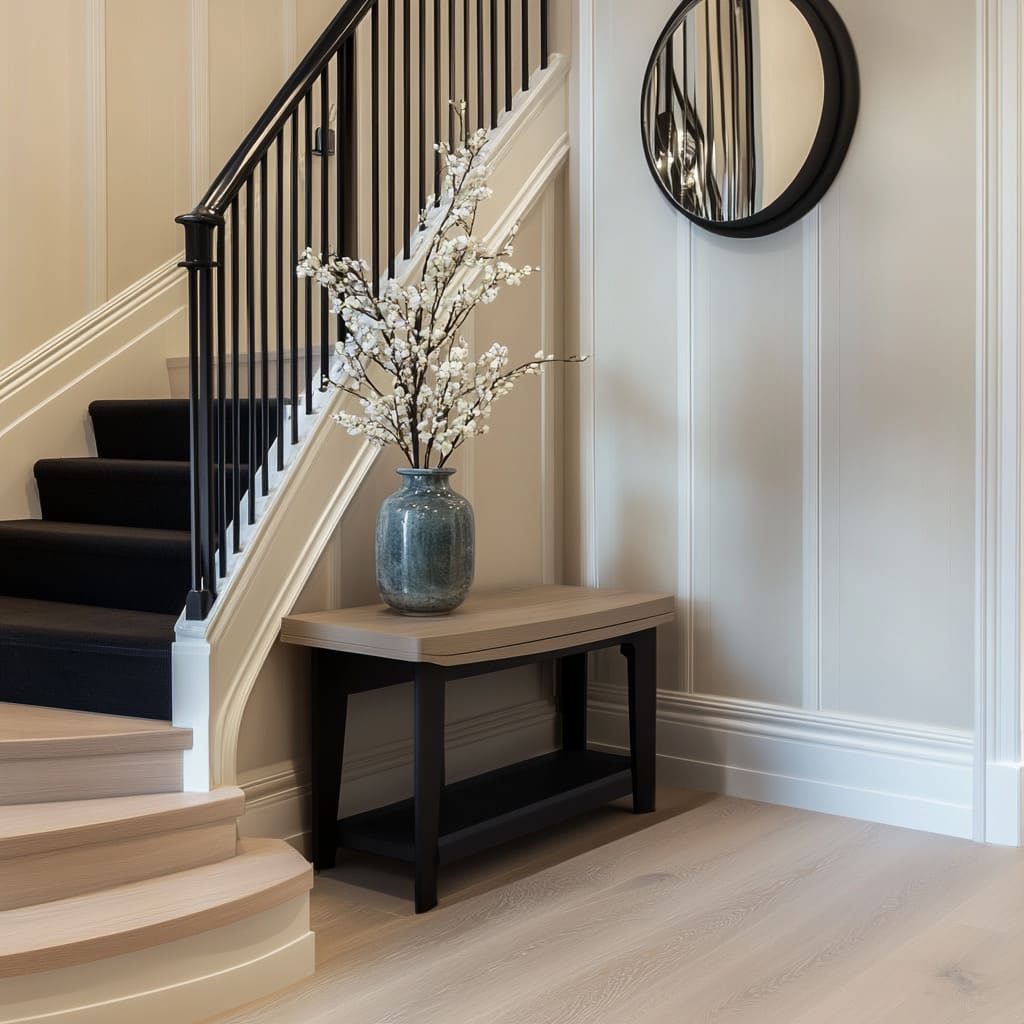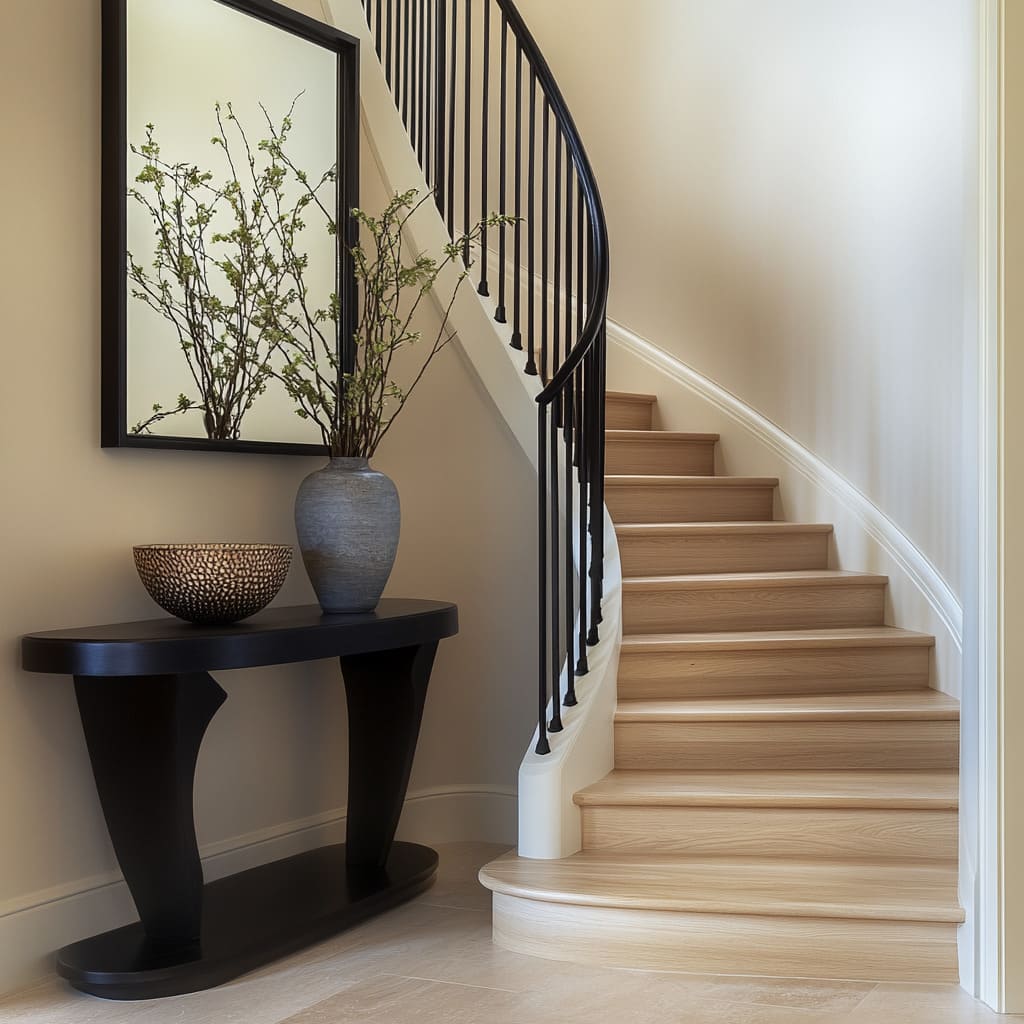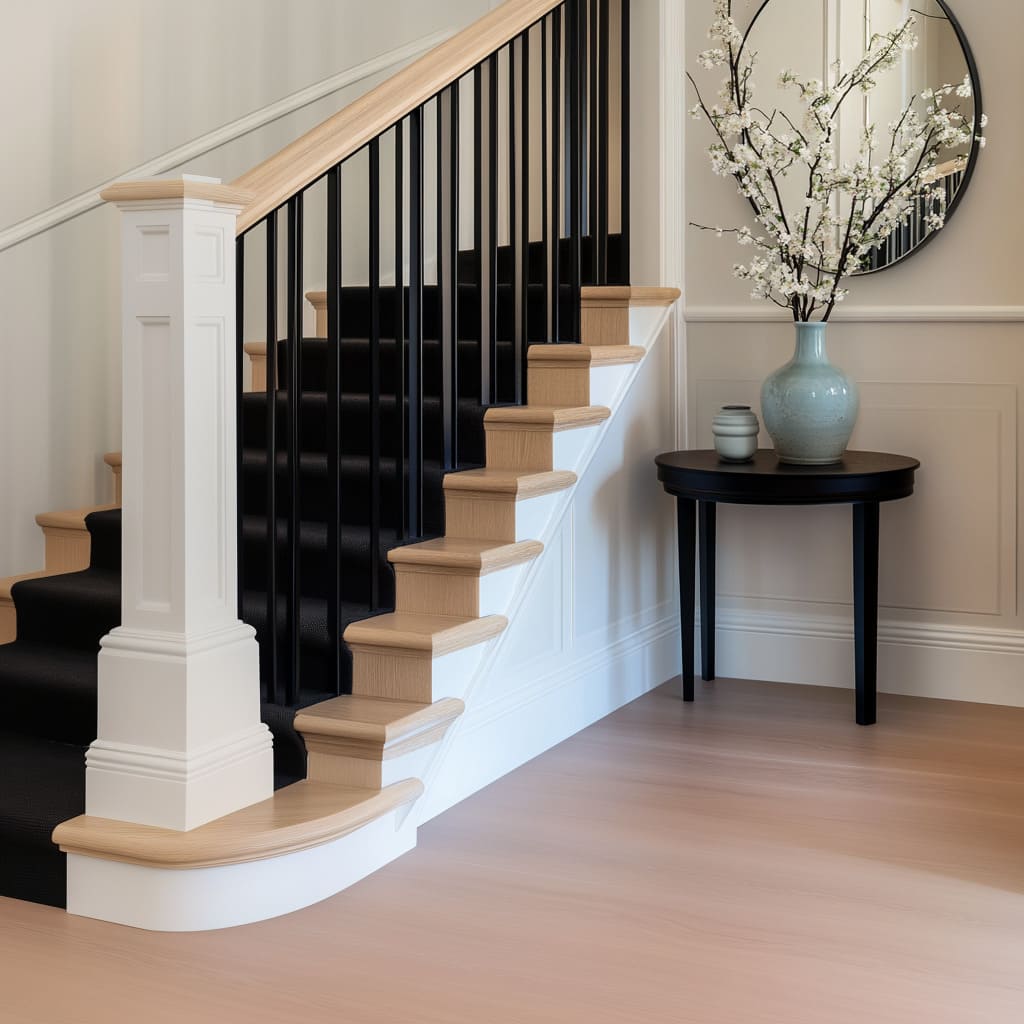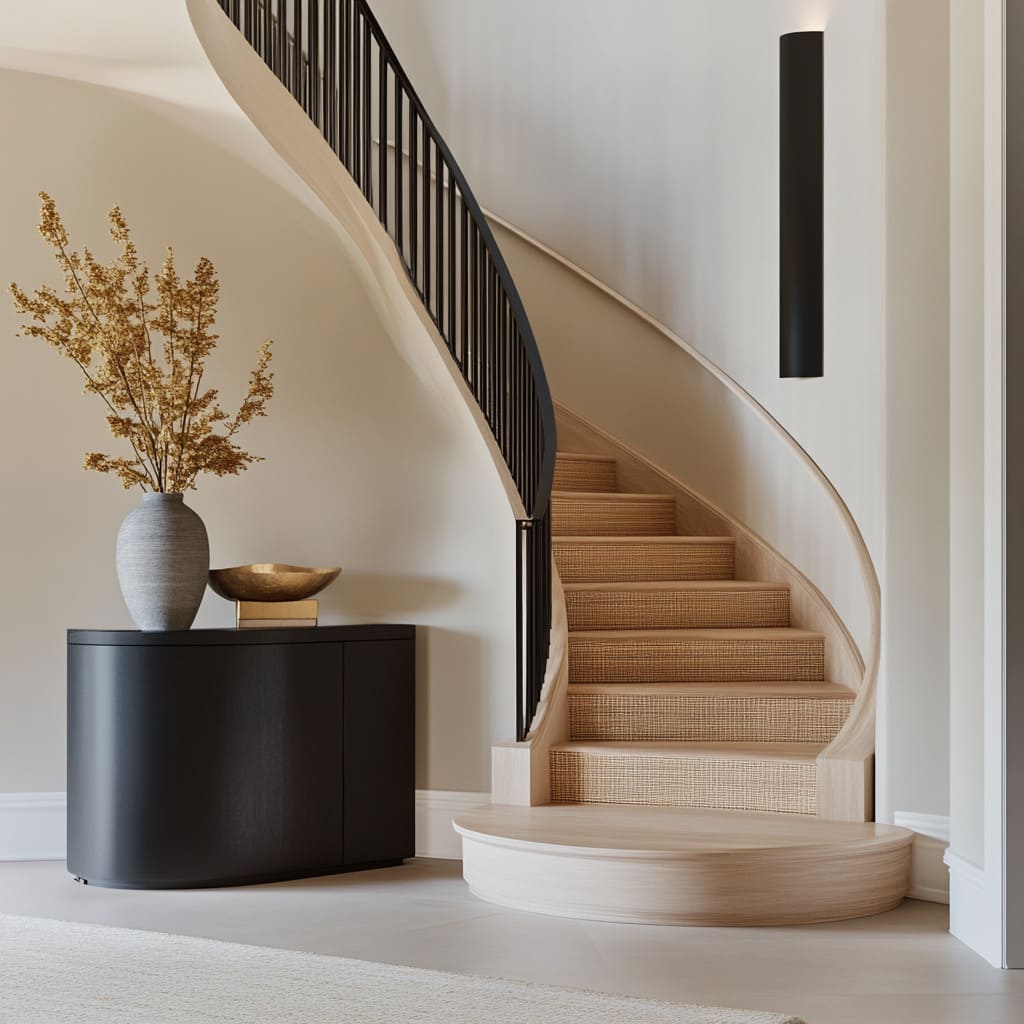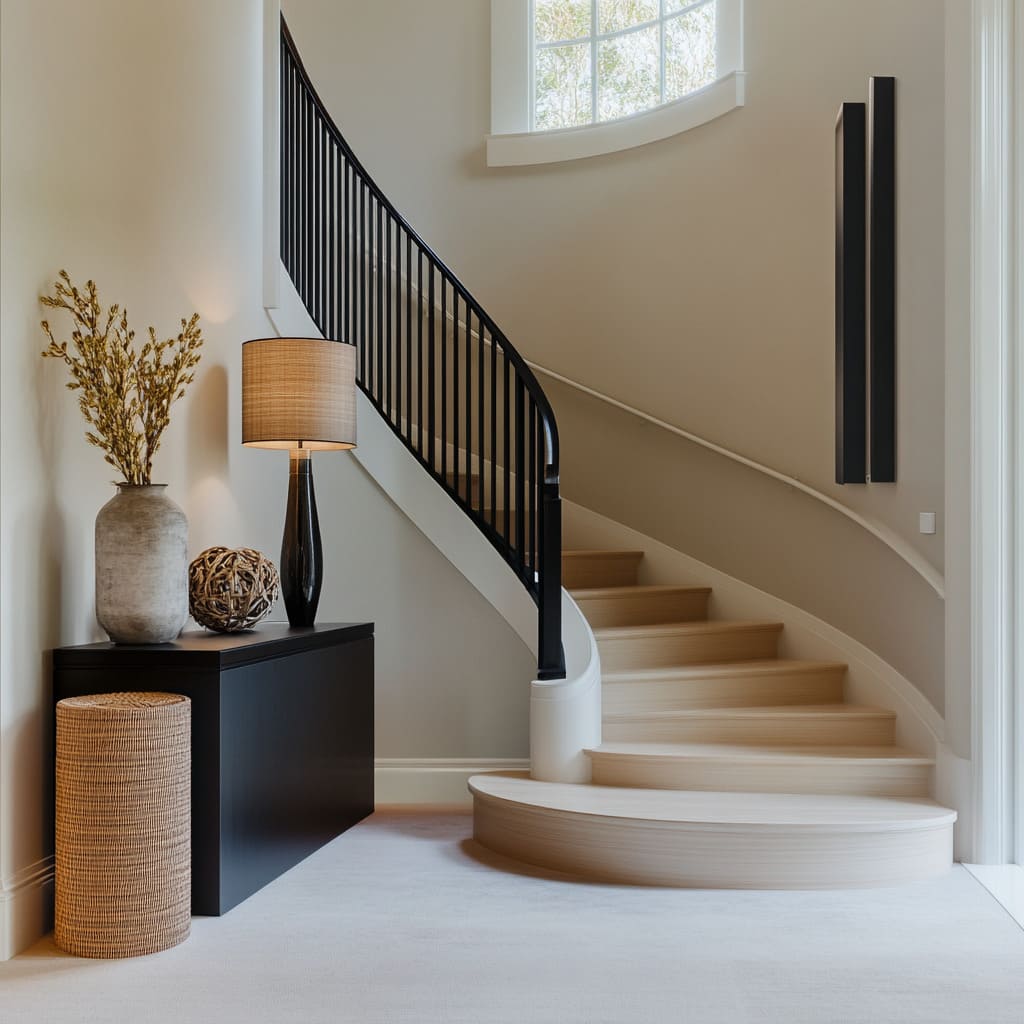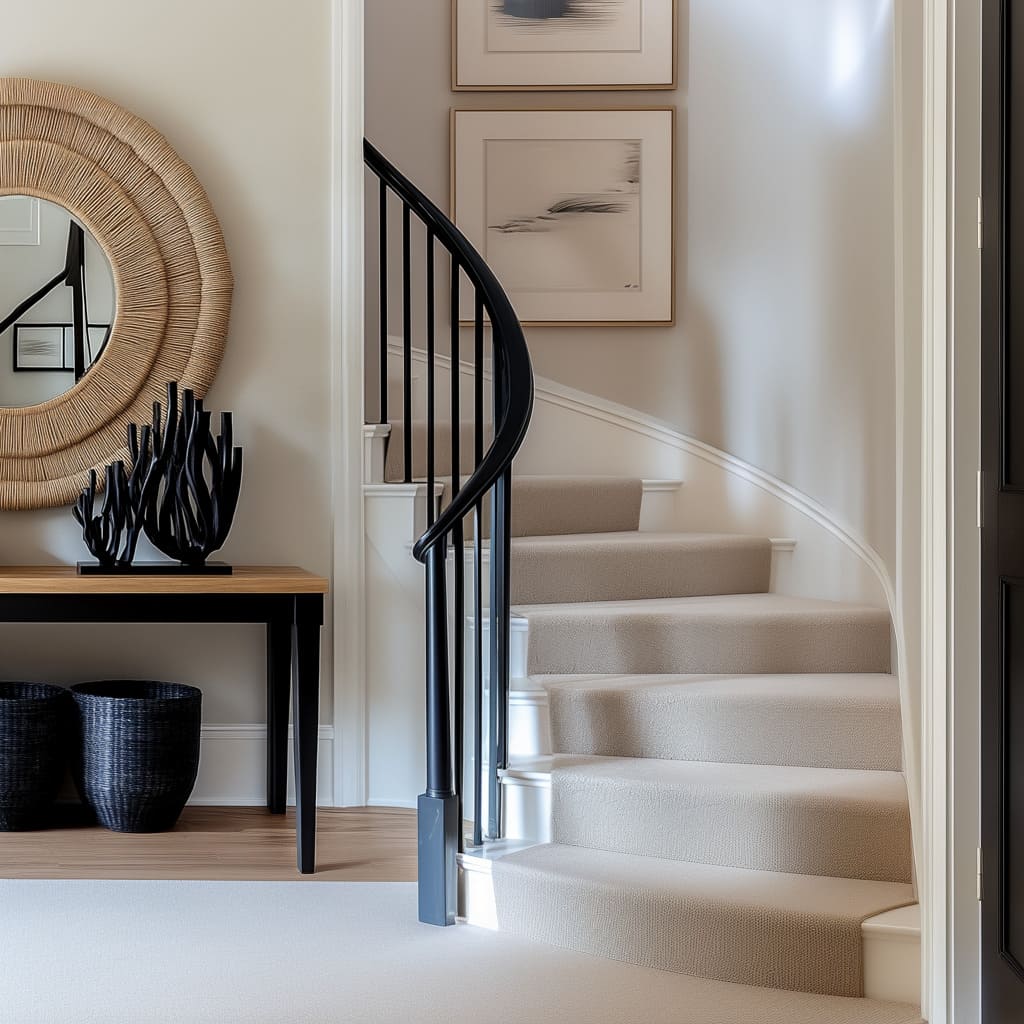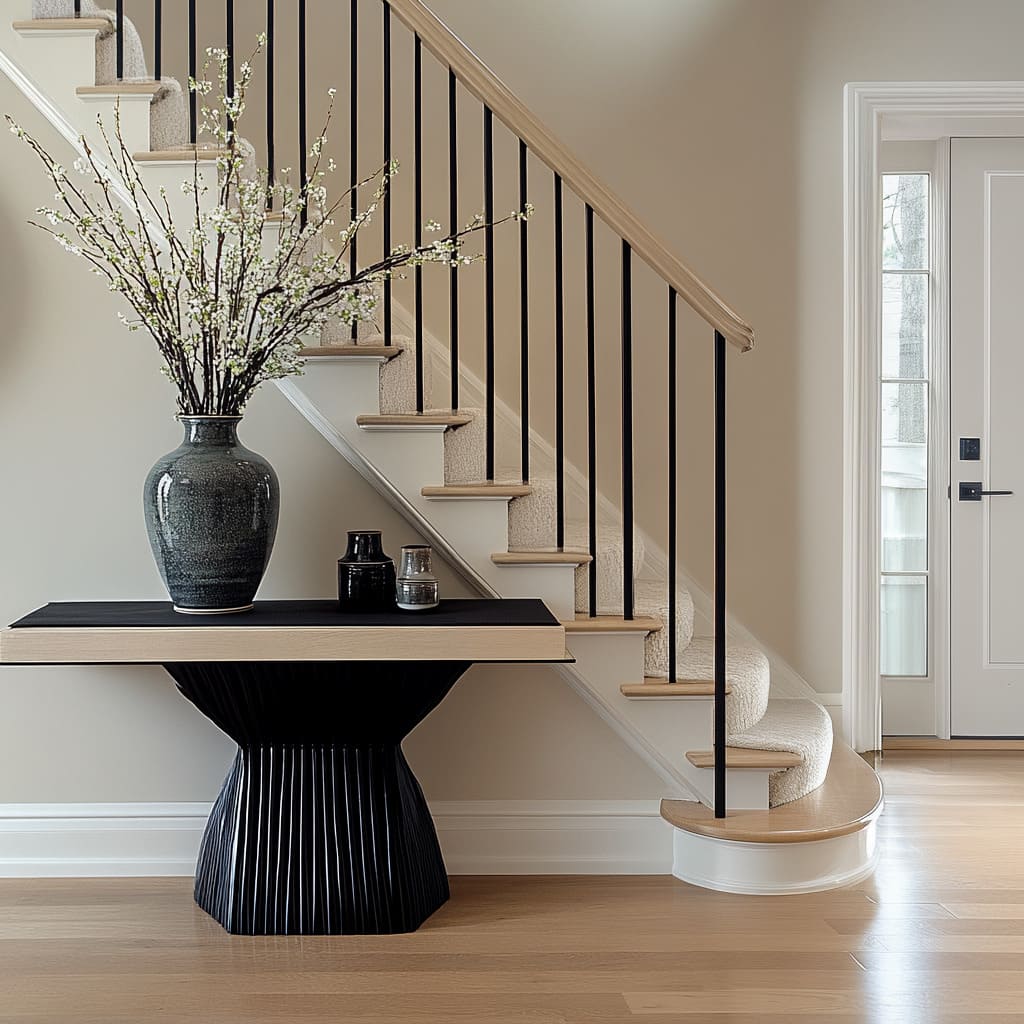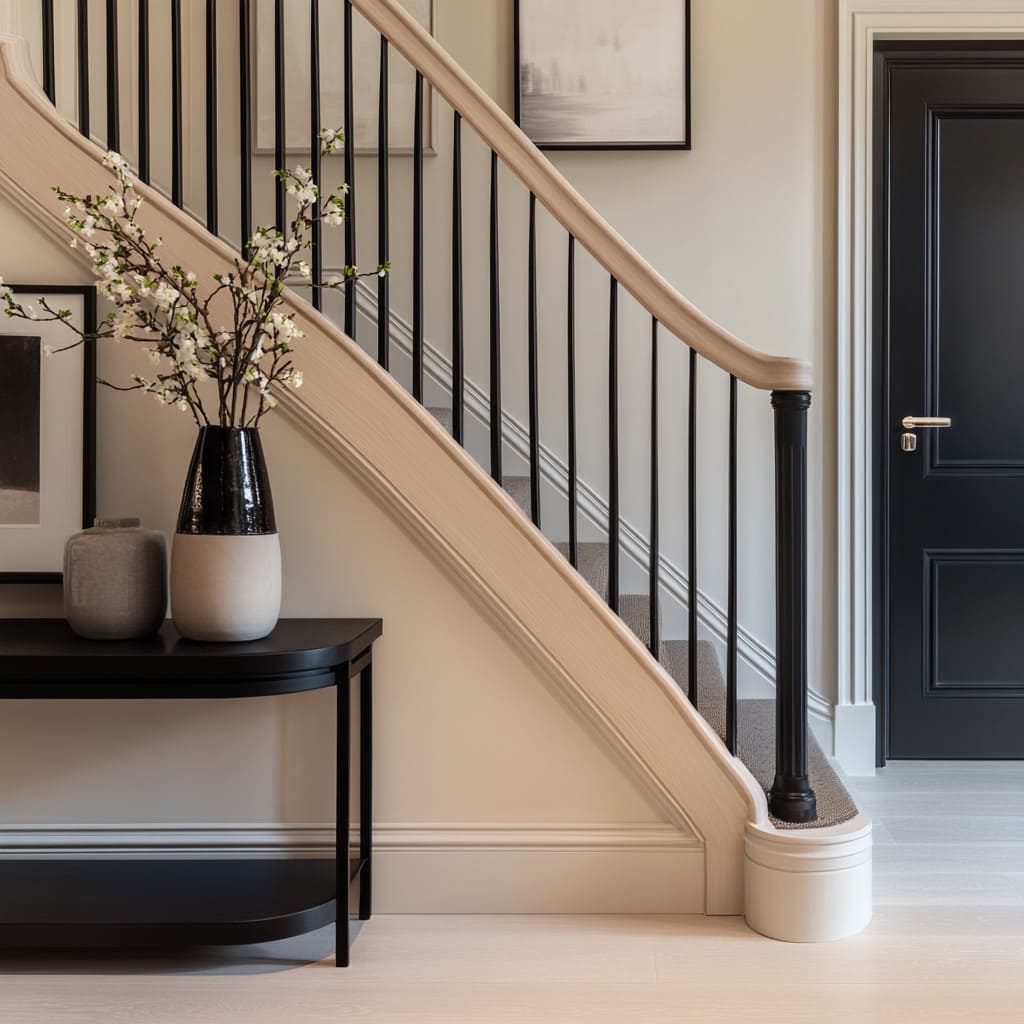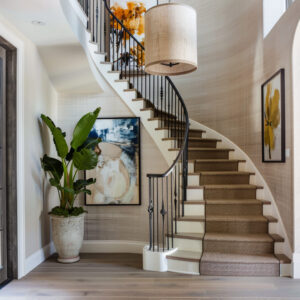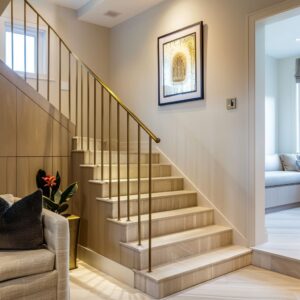A staircase is far more than a functional structure—it’s an opportunity to define the character of a home. From graceful curves to intricate textures, the right staircase design can transform an ordinary space into something unforgettable.
Whether it’s the interplay of materials, the thoughtful placement of decor, or the way natural light highlights its features, a staircase serves as both a statement and a connection point within a home. In this article, we’ll explore ideas and insights to help you elevate your staircase into a focal feature that perfectly balances beauty and practicality.
Detailed Material Combinations and Their Psychological Effects
When considering curved staircase ideas, material choices can play a transformative role in the overall ambiance and functionality of a space. These combinations go beyond aesthetics, directly influencing how a staircase feels and interacts with its surroundings.
From woven elements to contrasting risers, the materials used in staircases can bring subtle yet impactful energy to a home.
Woven Elements with Wood and Metal
A thoughtful pairing of woven textures—such as cane or rattan—with wooden treads and sleek black metal balusters achieves a distinctive balance of modernity and natural charm. The woven materials bring a sense of warmth and informality, offsetting the stark, industrial nature of metal.
This interplay creates harmony within a space, offering a grounded, approachable feel while retaining a contemporary edge. Psychologically, the organic nature of woven textures has a calming effect, as it taps into the comfort associated with handcrafted, natural materials.
In contrast, the clean lines and symmetry of black metal balusters offer structure and refinement, ensuring the design doesn’t veer too rustic. Together, these elements can soften the overall tone of an interior while adding a dynamic, layered aesthetic.
Carpeted Treads with Wooden Framing
Some staircases take a functional and visually striking approach by combining carpeted treads with wooden frames. This design provides not only visual interest but also tactile benefits.
The softness of carpet underfoot enhances comfort, making each step quieter and more inviting. It’s particularly useful in open-plan homes, where sound management is crucial for creating a cohesive living environment.
The wooden framing, on the other hand, acts as a crisp visual border, emphasizing the structure of each step. This layered design enhances the staircase’s visual rhythm, guiding the eye upwards while making each tread distinct.
It’s a practical solution for blending comfort with style and is especially appealing in spaces that aim to merge modern design with homey practicality.
Contrasting Risers
Using contrasting materials or colors for staircase risers is a clever design strategy to add depth and personality. For instance, lighter risers create an airy, open feel, helping the staircase integrate seamlessly into its surroundings.
This effect is ideal for smaller spaces or homes with minimalist interiors. On the flip side, darker or patterned risers introduce a bold, graphic element, making each step stand out as part of a larger statement.
Woven risers are another intriguing option, combining texture and visual interest. They pair beautifully with plain wood treads and black balusters, offering a unique twist on traditional designs.
Contrasting risers also play with perception—lighter tones can make a staircase feel taller and more spacious, while darker tones ground the design, making it appear more robust and defined. Material choices in staircase design do more than create visual appeal—they actively shape how a home feels and functions.
Whether through the inviting warmth of woven textures, the soft acoustics of carpeted treads, or the striking contrast of patterned risers, these details enhance the experience of using a staircase while tying into the broader design of the home. For those exploring unique curved staircase ideas, experimenting with materials like cane, wood, and metal can bring balance and depth to an interior while catering to both aesthetic and practical needs.
Architectural Flow and Focal Point Placement
A well-thought-out curved staircase design doesn’t merely connect floors—it integrates into its environment as an architectural centerpiece. Through intentional curvature, carefully positioned decor, and smart lighting strategies, a staircase can become the harmonious bridge between the structural and decorative elements of a home.
Seamless Curvature Integration
The repetition of curved lines in staircases and adjacent furniture is a subtle yet powerful design tool. A staircase with a rounded handrail or base step feels more naturally tied to its setting when the curves are echoed in nearby elements, such as a curved console table or an arched mirror.
This approach creates a flow that subconsciously guides the eye across the space, linking different elements into a cohesive story. For example, matching the arc of a staircase’s handrail with the gentle bend of a console or mirror reinforces continuity, making the staircase feel like an organic extension of the room rather than a separate feature.
This design technique works exceptionally well in both modern and transitional interiors, where balance and harmony are central to the aesthetic.
Console as a Visual Anchor
The placement of a console table beside a curved staircase serves as more than a decorative choice—it creates a visual resting point. The console grounds the lower half of the staircase, offering a subtle pause before the eye follows the curve upwards.
Consoles that mimic the materials of the staircase—such as a black finish to echo metal balusters or wood tones that match the handrail—bridge the horizontal floor space with the vertical ascent. This design trick can make the transition between the staircase and the rest of the room feel seamless.
Moreover, adding decor such as vases, lamps, or framed art to the console enhances its role as a transitional element, enriching the space without overwhelming it.
Lighting and Window Placement
Light plays an essential role in highlighting the curves and textures of a staircase. Homes with large windows near the stairs often use natural light to bring out the finer details, such as the grain of wood treads or the intricate texture of woven risers.
The interplay between light and shadow on curved handrails and balusters adds dimension, accentuating the staircase as a sculptural centerpiece. Artificial lighting, when thoughtfully positioned, complements natural light and adds another layer of interest.
Wall sconces or lamps placed near the staircase can cast subtle highlights on the balusters, handrails, and treads. Choosing lighting fixtures with finishes that match the staircase hardware—like brushed metal or matte black—ensures cohesion.
This combination of natural and artificial lighting enhances the staircase’s architectural presence, making it a standout feature within the home. By blending flowing curves, well-placed focal points, and thoughtful lighting, a curved staircase design transforms into more than just a functional structure—it becomes an integral element of a home’s character, tying together various design features while enhancing the space’s overall atmosphere.
Hidden Structural Considerations
When it comes to curved staircase design ideas, the beauty of these architectural features is often underpinned by careful and meticulous engineering. Behind the smooth arcs and flowing lines lies a world of precise calculations and concealed supports that ensure the staircase is both visually cohesive and structurally robust.
Ensuring Baluster Spacing Works with Curvature
In curved staircases, the spacing of balusters isn’t as straightforward as with straight designs. Each baluster must be uniquely angled and measured to maintain even spacing throughout the curve.
This process ensures that the visual rhythm remains consistent, creating a sense of flow and balance that feels natural to the eye. Poorly spaced balusters can disrupt the harmony of the staircase, making the design feel chaotic or uneven.
On the other hand, when executed skillfully, the slim rods appear almost weightless, accentuating the staircase’s graceful curvature. This precise alignment not only satisfies aesthetic goals but also adheres to building codes, ensuring safety without compromising style.
Weight Distribution in Curved Staircases
The dramatic arcs of a curved staircase introduce unique challenges in terms of weight distribution. Unlike straight staircases, curved designs often require reinforced support at points where the curve is most pronounced.
These supports are frequently hidden behind drywall or beneath custom paneling, preserving the staircase’s clean and uncluttered appearance. The underside of the staircase, often overlooked, offers an opportunity to make an additional design statement.
Some homeowners choose to emphasize the curve by painting the underside in a contrasting color, such as black, which effectively outlines the arc and adds depth to the structure. This approach not only reinforces the architectural form but also elevates the staircase as a sculptural element within the home.
With a focus on precision and hidden support, curved staircases achieve a balance of visual lightness and structural strength. These carefully considered details are what transform curved staircase design ideas into practical, safe, and stunning features that enhance any interior space.
Color & Tonal Strategies
The choice of color and tonal balance is critical in staircase design, setting the tone for how a staircase integrates with its surroundings. Whether the aim is subtle harmony or bold contrast, the strategic use of color ensures the staircase becomes both a functional element and a design highlight.
Monochromatic Pairings (Light Wood + Black + White)
A timeless trio of light wood, black metal, and white or off-white paint remains a favorite in modern interiors. This combination achieves a crisp, clean aesthetic while retaining a sense of warmth.
The light wood introduces a natural, approachable feel, while black metal accents such as balusters or stair undersides provide structure and definition. White or off-white walls complete the look, allowing the design elements to stand out against a neutral backdrop.
To avoid a monotonous appearance, designers often incorporate metallic details or natural greenery. For instance, a brass vase on a nearby console or a leafy plant on a step landing adds a refreshing layer of visual interest.
These subtle pops of texture and color break the uniformity, enhancing the staircase’s presence within the space without overpowering it.
Earthy Neutrals with Subtle Contrast
For a more muted yet equally impactful approach, earthy tones like beige, taupe, and soft gray offer a neutral palette that complements a staircase’s curves and textures. Beige or off-white walls provide an understated backdrop, ensuring that the staircase remains the focal point.
Slight tonal variations—such as a slightly darker shade of beige for risers or a cooler gray for flooring—can create depth and dimension while maintaining an overall cohesive look. This approach works particularly well in transitional or contemporary homes, where subtle contrast is key.
By avoiding stark differences, the space feels layered and inviting, with the staircase gently standing out against its surroundings.
Combining Bold Black with Softer Patterns
Black, used as a framing element, is an effective way to highlight the staircase’s shape and structure. Whether through black balusters, an underside painted in black, or black-framed risers, this bold choice adds graphic definition to the design.
It draws the eye and anchors the staircase within the room, making it an unmistakable design feature. To counterbalance the intensity of black, softer patterns or textures are often introduced.
Carpeting in neutral tones or woven risers with organic textures create a pleasing contrast, softening the staircase’s overall look. This balance of boldness and softness ensures the staircase feels both dynamic and approachable.
Strategic color choices like these demonstrate how staircases can adapt to a wide range of interiors, from minimalist spaces to more traditional settings. By leveraging a thoughtful mix of tones and materials, these designs bring a sense of cohesion and refinement, elevating the staircase to a key feature within the home.
Decor Integration that Reinforces Staircase Features
When it comes to curved staircase decorating ideas, the surrounding decor plays a vital role in enhancing and complementing the staircase’s design. Thoughtfully chosen elements can echo the staircase’s shape, textures, and lines, ensuring a cohesive and visually striking space.
Mirrors that Reflect Curves
Mirrors are a simple yet impactful way to amplify the visual presence of a curved staircase. By placing a round or rectangular mirror strategically near the staircase, the reflection captures and highlights the balusters, handrail, or the graceful arc of the steps.
This creates an artistic doubling effect, where the curves of the staircase are mirrored in the decor, adding depth and dimension to the space. Additionally, mirrors help to bring light into areas that might otherwise feel dim or closed off.
For example, in a hallway or corner where the staircase is the focal point, a mirror can reflect light from a nearby window or lamp, making the area feel brighter and more open. The mirrored repetition of the staircase’s architectural lines creates a subtle, refined visual harmony.
Branch Arrangements and Greenery
One of the most effective ways to tie decor into a staircase is through the use of tall vases filled with branches or greenery. Branch arrangements, whether fresh or dried, naturally echo the verticality of the balusters.
Their height and form draw the eye upward, reinforcing the natural flow of the staircase. Branches with a slight curve are particularly effective when paired with a curved staircase, as their organic shapes complement the arcs of the handrail and steps.
This creates a subtle but meaningful connection between the staircase’s design and the surrounding decor. Additionally, greenery or branches establish a link to natural materials, complementing wood treads or woven risers.
These touches of nature soften the space while adding vibrancy and life.
Sculptural Objects that Mimic Textures
Decor pieces with interesting textures or finishes can further enhance the staircase’s design. Woven baskets, for instance, are a common decorative element placed near or beneath a console table adjacent to a staircase.
These items mirror the woven textures often found on risers or carpets, creating a cohesive and tactile design language. Metallic decor, such as bowls, vases, or sculptures, introduces a subtle shimmer that ties into other metallic accents, such as lighting fixtures or hardware.
These reflective elements catch the light and add a sense of movement, echoing the dynamic curves of the staircase. The combination of woven textures and metallic finishes balances organic warmth with modern sophistication.
By integrating mirrors, natural elements, and sculptural decor, you can create a harmonious setting that elevates the staircase’s role as a design centerpiece. These curved staircase decorating ideas ensure that every detail of the surrounding decor not only enhances but also reinforces the architectural beauty of the staircase itself.
Trends and Forward-Looking Concepts
Staircase design continues to evolve, and stairs with curved design are leading the way in redefining both functionality and aesthetics. With innovative materials, concealed engineering, and dynamic lighting solutions, these staircases are paving the path for the future of interior design.
Woven Risers Beyond Traditional Materials
The concept of woven risers has already proven to be a popular choice for adding texture and visual interest to staircases. However, this trend could take an exciting turn by embracing non-traditional materials.
For example, recycled plastics woven into geometric patterns could provide an eco-friendly and visually bold solution. This not only adds a contemporary touch but also appeals to those seeking sustainable options in home design.
Another forward-thinking idea involves replacing woven fibers with translucent panels or resin inserts. Backlighting these panels could create a glowing effect, highlighting the curve of the staircase and transforming it into a striking feature even in low-light settings.
Such experimental approaches elevate woven risers into a modern design statement.
Floating Effects and Hidden Supports
The illusion of a floating staircase has become a captivating feature in modern homes. For curved designs, this effect is even more dramatic, as the arc appears to defy gravity when the support structure is cleverly concealed behind walls or beneath panels.
This design choice keeps the focus squarely on the curve itself, emphasizing its smooth and uninterrupted form. When paired with ultra-thin balusters, the staircase achieves a minimalist aesthetic that feels almost weightless.
This approach is particularly effective in open-concept spaces, where the staircase becomes a sculptural centerpiece without overwhelming the surrounding architecture.
Mixed-Media Handrails
Traditional handrails are often crafted from a single material, but future trends are leaning toward mixed-media designs. Imagine a handrail that seamlessly transitions from natural wood to metal or even glass.
This layered effect introduces visual interest and offers homeowners the flexibility to match the staircase with other design elements in their home. For instance, a wooden handrail segment near the living area could blend into a glass section near a more modern space, creating continuity across different styles.
This versatile approach allows stairs with curved design to align with a home’s overall theme while maintaining their individuality as a feature.
Interactive Lighting
Lighting has long been a functional aspect of staircases, but the integration of interactive lighting is set to transform them into dynamic focal points. LED strips placed along the underside of each step or embedded within the balustrade highlight the arc of the staircase while providing soft, ambient illumination.
This kind of lighting doesn’t just enhance safety at night—it adds a layer of drama and sophistication to the staircase. With adjustable brightness and color options, homeowners can customize the mood of their space, making the staircase an active participant in the overall design.
These emerging trends demonstrate how stairs with curved design are not just functional structures but opportunities for creativity and innovation. By embracing new materials, hidden engineering, and advanced lighting techniques, these staircases are poised to become defining features in the interiors of tomorrow.
Noteworthy Compositional Ideas
The design of a custom curved staircase goes beyond its structural elements, offering an opportunity for a finely tuned interplay between architecture, furniture, textures, and art. These thoughtful compositional choices elevate the staircase from a functional feature to a central design statement.
Baluster Alignment with Console Lines
An often underappreciated detail is how the lines and surfaces of adjacent furniture, such as a console table, align with the staircase’s balusters. When done thoughtfully, the negative spaces between the balusters mirror the horizontal lines of the console.
This subtle alignment creates a rhythmic flow between the vertical elements of the staircase and the horizontal planes of the surrounding furniture. This design strategy not only ties the staircase into the larger space but also establishes a sense of visual continuity.
It’s an understated approach that makes the staircase feel like an integral part of the room rather than an isolated feature. The console, in this case, acts as a design partner, its lines echoing the symmetry and proportions of the staircase.
Use of Circular or Curved Landing Steps
The introduction of a rounded or curved landing step at the base of the staircase adds a welcoming and practical touch. These “pivot steps” create a natural transition from the flat surface of the floor to the staircase’s upward movement.
This design feature is particularly effective in a custom curved staircase, where it mirrors the flowing lines of the overall structure. Beyond practicality, the rounded step softens the geometry of the staircase, making the design feel approachable and fluid.
It also serves as a subtle focal point, drawing attention to the base of the staircase and inviting movement upward.
Layering of Textures in the Same Color Family
A hallmark of well-designed curved staircases is the careful layering of textures within the same color palette. Designers often combine materials such as soft carpeting, woven risers, and smooth wood grains, all in similar tones.
This approach creates depth and interest without disrupting the overall harmony of the staircase. For instance, a staircase with light beige treads may incorporate woven risers in a slightly darker tone or a faintly patterned carpet for subtle contrast.
These layers of texture enhance the tactile and visual experience of the staircase while maintaining a cohesive look that blends seamlessly with the surrounding interior.
Subtle Artwork Integration
When artwork is incorporated near a curved staircase, it is often minimalist in both color and shape. This careful selection ensures that the art enhances rather than competes with the staircase, allowing the architectural feature to remain the central focus.
Pieces that mimic the textures or curves of the staircase itself—such as abstract works with sweeping lines or muted tones—create a cohesive aesthetic. By reflecting the shapes and materials present in the staircase, the artwork becomes an extension of the design rather than a standalone element.
The thoughtful integration of balusters, furniture, textures, and artwork into the design of a custom curved staircase demonstrates how every detail contributes to the overall composition. These small yet impactful choices create a staircase that not only serves its functional purpose but also elevates the entire space with its thoughtful balance of form and detail.
Practical Insights for Implementation
Designing a staircase is a balance between aesthetics, practicality, and long-term usability. To ensure a staircase stands the test of time while maintaining its visual appeal, certain key considerations must be addressed during the planning and implementation stages.
Durability vs. Aesthetics
While a staircase should make a strong visual statement, it must also withstand the daily wear and tear of a high-traffic area. Carpeting, for instance, adds a layer of comfort and softness underfoot but comes with maintenance requirements.
Opting for stain-resistant or high-performance fabrics can mitigate concerns about spills or dirt, especially in homes with children or pets. Woven surfaces, such as risers crafted from cane or other fibrous materials, bring a unique texture to the staircase.
However, these surfaces are more delicate and may require protective coatings or gentle cleaning routines to keep them looking fresh. Choosing materials that balance beauty with resilience is essential for a staircase that’s both stunning and functional.
Avoiding Overcrowding
A visually intricate staircase, especially one with striking curvature or bold design elements, benefits from a minimalist approach to the surrounding decor. Overloading the area with ornate or competing objects can detract from the staircase’s impact, creating a sense of visual clutter.
Instead, opt for subtle accents that support the design without overwhelming it. For example, a clean-lined console table with a single decorative vase or a strategically placed mirror can complement the staircase while allowing its details to shine.
This approach ensures that the staircase remains the focal point of the space.
Maximizing Natural Light
Natural light can dramatically enhance the appearance of a staircase, emphasizing its curves, textures, and materials. Ideally, large windows positioned near the staircase allow light to cascade over the design, highlighting its features in a way that feels effortless and organic.
However, if the staircase is in a less naturally lit area, carefully chosen lighting fixtures can achieve a similar effect. Floor lamps, sconces, or overhead lights should be positioned to highlight key elements—such as the curvature of the handrail or the texture of the risers—without creating harsh glare.
Soft, diffused lighting is particularly effective in maintaining the staircase’s visual appeal while ensuring it feels welcoming and warm.
Long-Term Considerations
For homes that experience frequent use, especially family spaces, practicality should always accompany style. Items like decorative vases or fragile accessories placed near the staircase can easily become casualties of high traffic.
Opting for anchored decor or heavier objects that are less likely to tip can reduce accidents, as can placing items slightly away from the main traffic flow. Moreover, considering how the materials will age over time is crucial.
For example, wood may develop a patina that enhances its character, while certain fabrics or surfaces may need periodic cleaning or refinishing to maintain their appeal. These forward-looking decisions ensure the staircase remains as functional and attractive years down the line as it is on day one.
By carefully balancing materials, decor, lighting, and practicality, homeowners can create staircases that not only enhance their spaces visually but also integrate seamlessly into the rhythms of everyday life. This thoughtful approach ensures the staircase remains a long-lasting centerpiece, combining form and function in equal measure.
Conclusion
Curved staircases are more than simple transitions between floors. They can command attention as a major design statement, uniting architectural interest with everyday function.
By selecting materials that highlight texture, balancing light and dark elements, and aligning decor so that it complements the central sculptural form, designers create impactful spaces that remain welcoming and practical. What distinguishes these staircases from standard designs is their meticulous attention to details—like baluster positioning, hidden supports, woven panels, and subtle repetition of curved lines in surrounding furniture.
Combined with focused lighting strategies, these details transform a standard structural element into a significant part of the interior’s identity.
